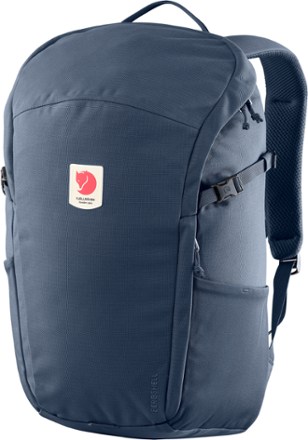For a lot of people, cold toes are a forgone conclusion when winter arrives. But frozen feet can dampen the fun and shorten your day outside. The good news: It doesn't have to be that way. We talked to James Bratton, a Denver-based REI guide who leads multi-day backpacking and camping trips, to learn how he manages to keep his feet warm during wintry playtime—and beyond.
If you remember only one thing, let it be this: If your feet are dry, they are far more likely to stay warm. In fact, most tips on this list focus on ways to keep your feet, socks and footwear free of moisture. This is because water on your skin steals heat when it evaporates. And while common sense dictates that you shouldn't jump into an icy-cold river on a wintry day, this isn't the only way to soak your stompers. Snow and sweat can also leave them damp and cold. Read on for more tips on how to keep your feet happy on chilly adventures.
Invest in a Pair of Gaiters
Snow is sneaky. It can easily make its way into your boots when you're on a hike or run, soaking your socks and shoes. To avoid this, consider grabbing a pair of gaiters to keep the snowfall out of your boots or runners. This essential piece of hiking gear comes in many different materials, sizes and lengths, so you can select the appropriate coverage for your activity, be it trail running or hiking. (Related reading: How to Choose and Use Gaiters and The Best Gaiters: Tested)
Wear Breathable Footwear
Waterproof footwear and appropriate gear like gaiters is a non-negotiable when you're playing in the snow because it prevents moisture from reaching your foot. But Bratton explains that it's just as important to choose breathable boots that allow sweat to escape through the membrane. That way, the moisture isn't sitting on your skin. Bratton suggests looking for footwear made with technologies like GORE-TEX, a waterproof-breathable fabric membrane. Other materials that are great for this purpose include eVent® or Outdry.
Choose the Appropriate Amount of Insulation
Insulation in your boots will keep your toes warm, but it's important to choose the appropriate amount for your chosen activities. More insulation isn't always better. If you're highly active and wear footwear with too much insulation, your feet will sweat. More sweat will lead to more moisture—and chillier feet. So active pursuits (like hiking or snowshoeing) will typically need less insulation than sedentary ones (like icefishing or snowmobiling). Choosing a boot with a thick sole is another consideration. More material between your feet and the ground can help prevent losing heat to the cold ground below you.
Be Picky About Your Socks
Bratton advises staying away from cotton socks. Cotton is hydrophilic—which literally means water-loving—so it absorbs moisture instead of wicking it. Because this absorbent fabric will sit against your skin and chill you, it's best to avoid it. To keep your feet dry, consider buying wool or synthetic socks (Related reading: How to Choose Socks), which are designed to pull sweat away from your skin (read more about how wool can help keep you dry).
Your sock size and thickness are also important. Thinner socks will insulate your feet less but allow for normal blood flow. Meanwhile, thicker socks offer more warmth but can lead to overheating or reduced blood flow if your boot isn't roomy enough to accommodate the extra fabric. Plus, thinner socks tend to dry faster than thicker ones, which can absorb more water. When in doubt, Bratton suggests taking your socks into the store to try on with your boots. That way, you'll be sure to have the best pairing for your needs.
Keep Your Core Warm
If your toes feel like a bunch of ice blocks, it's tough to think about anything else. But it's critical to keep your core warm while outside in the snow or other cold conditions. Bratton says that if your core gets cold, your body will start pulling blood from your extremities—like your feet—to warm your internal organs. While movements like leg swings or brisk walking will help get it back, it takes time. To avoid this, be sure to layer appropriately and adjust as needed based on your activity level (Related reading: Layering Basics).




